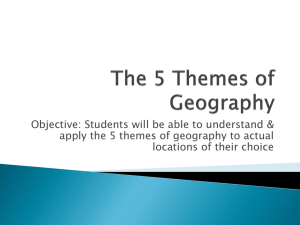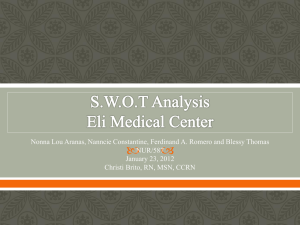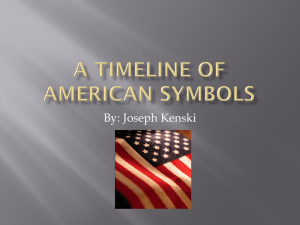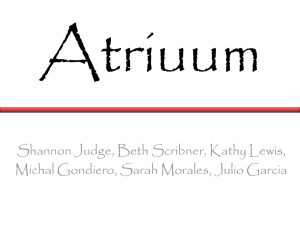EDU 357: International Cross-Cultural Education
advertisement
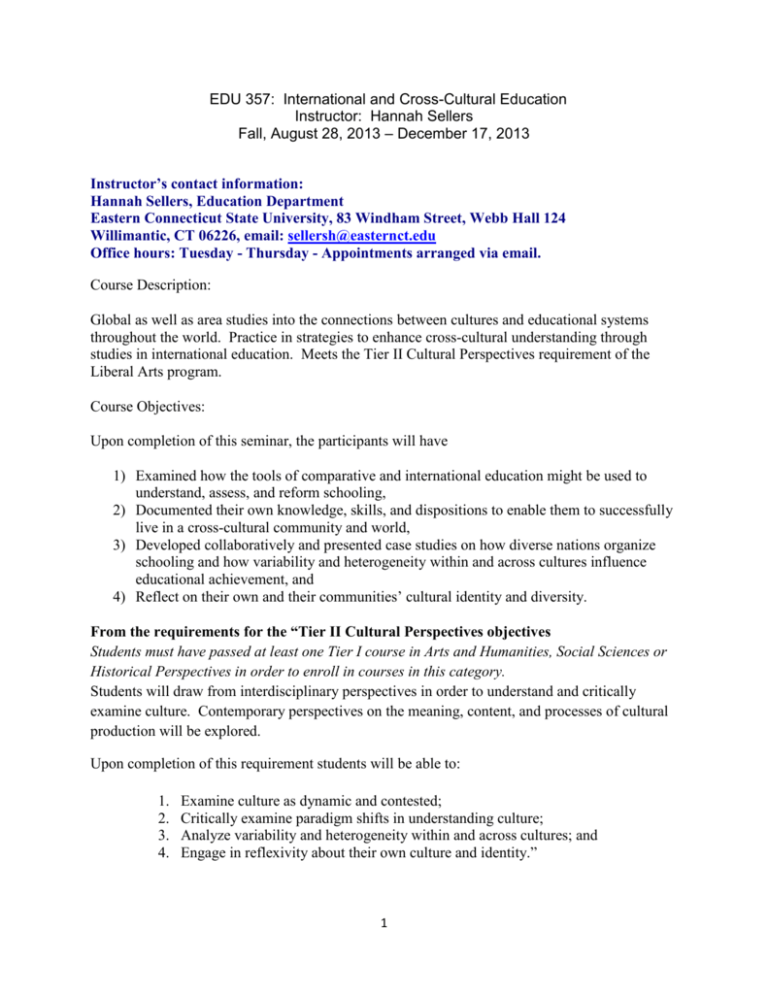
EDU 357: International and Cross-Cultural Education Instructor: Hannah Sellers Fall, August 28, 2013 – December 17, 2013 Instructor’s contact information: Hannah Sellers, Education Department Eastern Connecticut State University, 83 Windham Street, Webb Hall 124 Willimantic, CT 06226, email: sellersh@easternct.edu Office hours: Tuesday - Thursday - Appointments arranged via email. Course Description: Global as well as area studies into the connections between cultures and educational systems throughout the world. Practice in strategies to enhance cross-cultural understanding through studies in international education. Meets the Tier II Cultural Perspectives requirement of the Liberal Arts program. Course Objectives: Upon completion of this seminar, the participants will have 1) Examined how the tools of comparative and international education might be used to understand, assess, and reform schooling, 2) Documented their own knowledge, skills, and dispositions to enable them to successfully live in a cross-cultural community and world, 3) Developed collaboratively and presented case studies on how diverse nations organize schooling and how variability and heterogeneity within and across cultures influence educational achievement, and 4) Reflect on their own and their communities’ cultural identity and diversity. From the requirements for the “Tier II Cultural Perspectives objectives Students must have passed at least one Tier I course in Arts and Humanities, Social Sciences or Historical Perspectives in order to enroll in courses in this category. Students will draw from interdisciplinary perspectives in order to understand and critically examine culture. Contemporary perspectives on the meaning, content, and processes of cultural production will be explored. Upon completion of this requirement students will be able to: 1. 2. 3. 4. Examine culture as dynamic and contested; Critically examine paradigm shifts in understanding culture; Analyze variability and heterogeneity within and across cultures; and Engage in reflexivity about their own culture and identity.” 1 From Philosophy of the Liberal Arts Core Curriculum: Guiding Principles. Retrieved from http://nutmeg.easternct.edu/lapc/LACC2006.htm Texts: Delpit, L. (2006), Other People’s Children: Cultural Conflict in the Classroom. New York: The New Press. Central Intelligence Agency (2011). CIA - The World Factbook. Retrieved from https://www.cia.gov/library/publications/the-world-factbook/index.html Paul D. Coverdell Worldwise Schools, [2002]. Building bridges [electronic resource]: a Peace Corps classroom guide to cross-cultural understanding. Washington, D.C.: National Geographic Education Foundation. Retrieved at http://permanent.access.gpo.gov/websites/peacecorpsgov/www.peacecorps.gov/wws/br idges/bridges.pdf. Assignments TDs - Active participation in threaded discussions related to the topics in the cross-cultural workbook and the text. 75 points 5 points for at least five 50 word contributions to introduction and 14 TDs 1. electronic portfolio – two options – for the assignments in this course or for organizing your Eastern experience 10 – 40 points 2. Essay on intercultural understanding, analyzing the presurvey and Eurobarometer reports. 3. Compare employers’ attitudes to education in Connecticut and Europe in an essay. 4. Develop an essay on a non-Western European, nonNorth American nation or an ethnic group using the categories outlined in the World Factbook – introduction, geography, people and society, government, economy, communications, transportation, military, and transnational issues. The essay should have at least 10 citations for journal articles found through the university database of full-text articles in specific content areas. Before selecting your nation or ethnic group, confer with the instructor and other participants in the threaded discussion on area studies. 30 points 5. Powerpoint presentation – prepare an individual powerpoint presentation on how your major might study schools in the nation you have been studying and This assignment is ongoing throughout the course. Final project due near end of 2 30 points 100 points present it to the class course 40 points for individual projects 6. In an essay, describe how you have adapted (or plan 100 points to adapt) your teaching (or if you are not an education major your professional interactions) with students (or other people) who would benefit from special accommodations for their exceptionalities, race, ethnicity, gender, culture, linguistics and socioeconomic status. Participants will develop this essay with at least 10 references from their major focusing on the education of (or professional interactions with) at least three different specific groups which may require accommodations. 7. How have your knowledge, skills, and dispositions been enhanced by this seminar? Write an essay and outline 10 ideas you will be taking away from this experience. 20 points Please discuss with the instructor potential alternative projects on our colloquium topics. (General rule is that one hour of effort earns 4 points.) Assessment: Students will earn points by completing assignments and participating in class activities and discussions. The total number of points in assignments in the outline is more than 400 points. Participants are encouraged to suggest other alternative activities related to the content of the course to earn additional or substitute points for the outlined projects. By session end, earning 372 points or more will result in an A: Earned points by the end of the course 372 or more A 360 - 371 A- 346 – 359 B+ 333 - 345 B 320 - 332 B- 306 - 319 C+ 292 – 305 C 3 280 - 291 C- 267 - 279 D+ 253 - 266 D 240 – 252 D- Less than 240 F Course Activities and Assessment Aligned to 2008 Unit Conceptual Framework (CF) ECSU proficiencies and other goals and competencies for EDU 357 – International and CrossCultural Education All course goals, objectives, and themes are interconnected with the Education Unit Conceptual Framework Candidate Proficiencies (ECP), Goals of the Liberal Arts Core Curriculum (LACC) at Eastern CSU, Goals of the Tier I Social Sciences (IISS) category, Connecticut Pre-service Teacher Competencies (PTC), and the 2010 Connecticut Common Core of Teaching (CCT). The following table shows the elements of ECP, LACC, TISS, PTC, and CCT. Eastern Candidate Proficiencies (ECP) Goals of the Liberal Arts Core Curriculum at Eastern CSU (LACC) Tier II Cultural Perspectives objectives (TIICP) Preservice Teacher Competencies (PTC) Common Core of Teaching (CCT) 1: Content Knowledge (CNK) 2: Pedagogical Knowledge (PDK) 3: Integration of Knowledge (INT) 4: Technology as a Tool to Teach (TTT) 5: Diversity (DIV) 6: Professionalism (PRF) Our goal is to enable students to: 1.productively engage in multiple modes of thinking; 2. examine, organize, and synthesize information in ways appropriate to a variety of contexts; 3.communicate effectively orally, visually and in writing; 4. use scientific methods and concepts and quantitative skills to solve problems and make informed decisions; 5. understand how a person’s culture influences his/her view of the world; 6. act in an informed and Upon completion of this requirement students will be able to: 1: Development and Characteristics of Learners Domain 1: Content and Essential Skills Domain 2: Classroom Environment, Student Engagement, and Commitment to Learning Domain 3: Planning for Active Learning Domain 4: Instruction for Active Learning 1. Examine culture as dynamic and contested; 2. Critically examine paradigm shifts in understanding culture; 3. Analyze variability and heterogeneity within and 4 2: Evidencebased/Standardsbased Instruction 3: Evidence-based Classroom and Behavior Management 4: Assessment 5: Professional Behaviors and Responsibilities ethical manner in our global society; 7. understand the human condition from an historical context; and 8. foster curiosity and a passion for learning. across cultures; and 4. Engage in reflexivity about their own culture and identity.” Domain 5: Assessment for Learning Domain 6: Professional Responsibiliti es and Teacher Leadership The following table below provides an outline of how the goals and objectives of this course align with the ECP, LACC, TIICP, PTC, and the CCT program standards for beginning (and practicing) teachers. Also, each goal/objective is associated with a student product that would be completed during the course. Course Goals/Objectives/ Candidate Proficiencies Goals, proficiencies, and standards 5 Assessment ECP: 1: Content Knowledge (CNK) 2: Pedagogical Knowledge (PDK) 3: Integration of Knowledge (INT) LACC: 1.productively engage in multiple modes of thinking; 2. examine, organize, and synthesize information in ways appropriate to a variety of contexts; 3.communicate effectively orally, visually and in writing; 1) By the end of the course, the student will have 1) Examined how the tools of comparative, cross-cultural, and international education might be used to understand, TIICP: assess, and reform 1. Examine culture as dynamic and contested; schooling, 2. Critically examine paradigm shifts in understanding culture; 3. Analyze variability and heterogeneity within and across cultures; and 4. Engage in reflexivity about their own culture and identity.” PTC: 4: Assessment 5: Professional Behaviors and Responsibilities CCT: Domain 1: Content and Essential Skills Domain 2: Classroom Environment, Student Engagement, and Commitment to Learning Domain 3: Planning for Active Learning Domain 4: Instruction for Active Learning Domain 5: Assessment for Learning Domain 6: Professional Responsibilities and Teacher Leadership 6 Active participation in weekly threaded discussions on intercultural understanding Essay on intercultural understanding, analyzing the presurvey and Eurobarometer reports. Area study on an nation or ethnic group. Compare employers’ attitudes to education in Connecticut and Europe in a 500-word essay. 2) Documented their own knowledge, skills, and dispositions to enable them to successfully live in a crosscultural community and world, 1) ECP: 5: Diversity (DIV) LACC: 5.understand how a person’s culture influences his/her view of the world; 6. act in an informed and ethical manner in our global society; 7. understand the human condition from an historical context; and 8. foster curiosity and a passion for learning. TIICP: 1. Examine culture as dynamic and contested; 2. Critically examine paradigm shifts in understanding culture; 3. Analyze variability and heterogeneity within and across cultures; and 4. Engage in reflexivity about their own culture and identity.” PTC: 1: Development and Characteristics of Learners CCT: Domain 6: Professional Responsibilities and Teacher Leadership 7 Essays on their participation in CultureQuest project. Essays on the influences of culture on learning and cross-cultural relations. Individual and project presentations. 3) developed collaboratively and presented case studies on how diverse nations organize schooling and how variability and heterogeneity within and across cultures influence education achievement, 4) Reflect on their own and their communities’ cultural identity and diversity. ECP: 1: Content Knowledge (CNK) 2: Pedagogical Knowledge (PDK) 3: Integration of Knowledge (INT) 4: Technology as a Tool to Teach (TTT) Participation in threaded discussions. LACC: 1.productively engage in multiple modes of thinking; 2. examine, organize, and synthesize information in ways appropriate to a variety of contexts; 3.communicate effectively orally, visually and in writing Area studies. T1SS: 1. Understand the multifaceted and dynamic interactions within and between individuals, social systems, social structures, and social institutions; PTC: 3: Evidence-based Classroom and Behavior Management 4: Assessment CCT: Domain 1: Content and Essential Skills Domain 2: Classroom Environment, Student Engagement, and Commitment to Learning Domain 3: Planning for Active Learning Domain 4: Instruction for Active Learning Domain 5: Assessment for Learning Sources: Eastern CSU Education Department (2008). EASTERN CONNECTICUT STATE UNIVERSITY EDUCATION UNIT CONCEPTUAL FRAMEWORK: Revised Fall 2008. http://www.easternct.edu/~koiralah/ECSU%20Conceptual%20Framework%202008.pdf Liberal Arts Program Committee (2006). Goals of the Liberal Arts Core Curriculum at Eastern CSU. http://www.easternct.edu/lapc/LACC2006.htm Liberal Arts Program Committee (2006). Goals of Tier II Cultural Perspectives. http://www.easternct.edu/lapc/LACC2006.htm CONNECTICUT STATE DEPARTMENT OF EDUCATION (2010). 2010 Common Core of Teaching: Foundational Skills. http://www.sde.ct.gov/sde/lib/sde/pdf/educatorstandards/Board_Approved_CCT_2-32010.pdf 8 CONNECTICUT STATE DEPARTMENT OF EDUCATION (2010). REGULATION of State Board of Education, Rev. 2-3-2010, Part III, Pre-Service Teacher Competencies from http://www.sde.ct.gov/sde/lib/sde/pdf/cert/regulations/2014_proposed_regulations_2-32010.pdf Office of AccessAbility Services If you are a student with a disability and believe you will need accommodations for this class, it is your responsibility to contact the Office of AccessAbility Services at (860) 465-0189. To avoid any delay in the receipt of accommodations, you should contact the Office of AccessAbility Services as soon as possible. Please note that accommodations are not retroactive, and that I cannot provide accommodations based upon disability until I have received an accommodation letter from the Office of AccessAbility Services. Your cooperation is appreciated. Academic Services Center “Students are encouraged to use the support offered by the Academic Services Center (ASC) located on the ground floor of the Library. Advising Services and tutoring in math, writing, and other subjects, including supplementary instruction, are available. The ASC also offers assistance in study techniques, time management and understanding learning styles. Fall 2013 hours: Sun. 2-9; M.-Th. 9-9, Fri. 9-5. (Closed Sat.) For further information call 465-4310 or check the ASC website at http://www.easternct.edu/asc/ Academic Misconduct: "Academic Misconduct:” Students should read and understand Eastern's Academic Misconduct Policy, which can be found in the Eastern Student Handbook or at: http://www.easternct.edu/judicialaffairs/academicmisconduct/ All violations will be handled under the procedures established in this policy." WRITING CENTER STATEMENT "The ECSU Writing Center, located in the ASC and staffed by trained peer tutors, is available to help all students with their writing. The Writing Center supports the liberalarts mission of ECSU by helping students with their writing from any class, at any stage, from brainstorming and drafting to revision to proofreading and editing. We help students do their own work, and do it more comfortably and confidently. Any student can and should use the Writing Center--the process of talking with readers about writing and getting feedback on their writing is something all writers do and can benefit from. Students can either drop into the Center or make an appointment by going to www.rich37.com/easternct and registering online. It's a good idea for students to bring 9 copies of any assignment sheets to the Writing Center, so the tutor knows what is expected of the assignment." 10 Additional Web Resources: Central Intelligence Agency (2011). CIA - The World Factbook. Retrieved from https://www.cia.gov/library/publications/the-world-factbook/index.html Hill, C.W.L. (2006). Global Business Today: Chapter 3 – Differences in Culture. Retrieved from http://highered.mcgraw-hill.com/sites/0072973714/student_view0/chapter3/. RSA Animate (2010). Changing Education Paradigms. Retrieved from http://www.youtube.com/watch?v=zDZFcDGpL4U Eastern Connecticut State University – Dr. David Pellegrini (2011). Global Citizenship Program. Retrieved from http://nutmeg.easternct.edu/academicaffairs/documents/University_Meeting_111/GCPBrochure10noflipLo.pdf Compton, B. (Executive Producer) (2008). The quality of U.S. education: Two million minutes. Retrieved from http://www.youtube.com/watch?v=dgz3q6K4GOk Finlandia University's elementary education students (EDU 101, Foundations of Education, Fall '08). History of American Education: From the Revolution to the 20th Century. Retrieved from http://www.youtube.com/watch?v=60fXUQtwUVU Sudbury Valley School (2007). History of compulsory schooling. Retrieved from http://www.youtube.com/watch?v=uexMYBkfCic&feature=related marcjosephespino (2008). Dr. Maria Montessori. Retrieved from http://www.youtube.com/watch?v=G5ZP9sQj-x0&NR=1&feature=fvwp AMS and Nienhuis (2010). AMERICAN MONTESSORI SOCIETY. Retrieved from http://www.amshq.org/. Dingleburg (2008). John Dewey Progressive Movie. Retrieved from http://www.youtube.com/watch?v=OHYBoWp5yRU. 11

